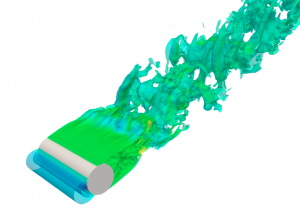A Guide to the Implementation of Boundary Conditions in Compact High-Order Methods for Compressible Aerodynamics
DOI: http://dx.doi.org/10.2514/6.2014-2923

Abstract: The nature of boundary conditions, and how they are implemented, can have a significant impact on the stability and accuracy of a Computational Fluid Dynamics (CFD) solver. The objective of this paper is to assess how different boundary conditions impact the performance of compact discontinuous high-order spectral element methods (such as the discontinuous Galerkin method and the Flux Reconstruction approach), when these schemes are used to solve the Euler and compressible Navier-Stokes equations on unstructured grids.
Specifically, the paper will investigate inflow/outflow and wall boundary con- ditions. In all studies the boundary conditions were enforced by modifying the boundary flux. For Riemann invariant (characteristic), slip and no-slip conditions we have consid- ered a direct and an indirect enforcement of the boundary conditions, the first obtained by calculating the flux using the known solution at the given boundary while the second achieved by using a ghost state and by solving a Riemann problem. All computations were performed using the open-source software Nektar++ (www.nektar.info).